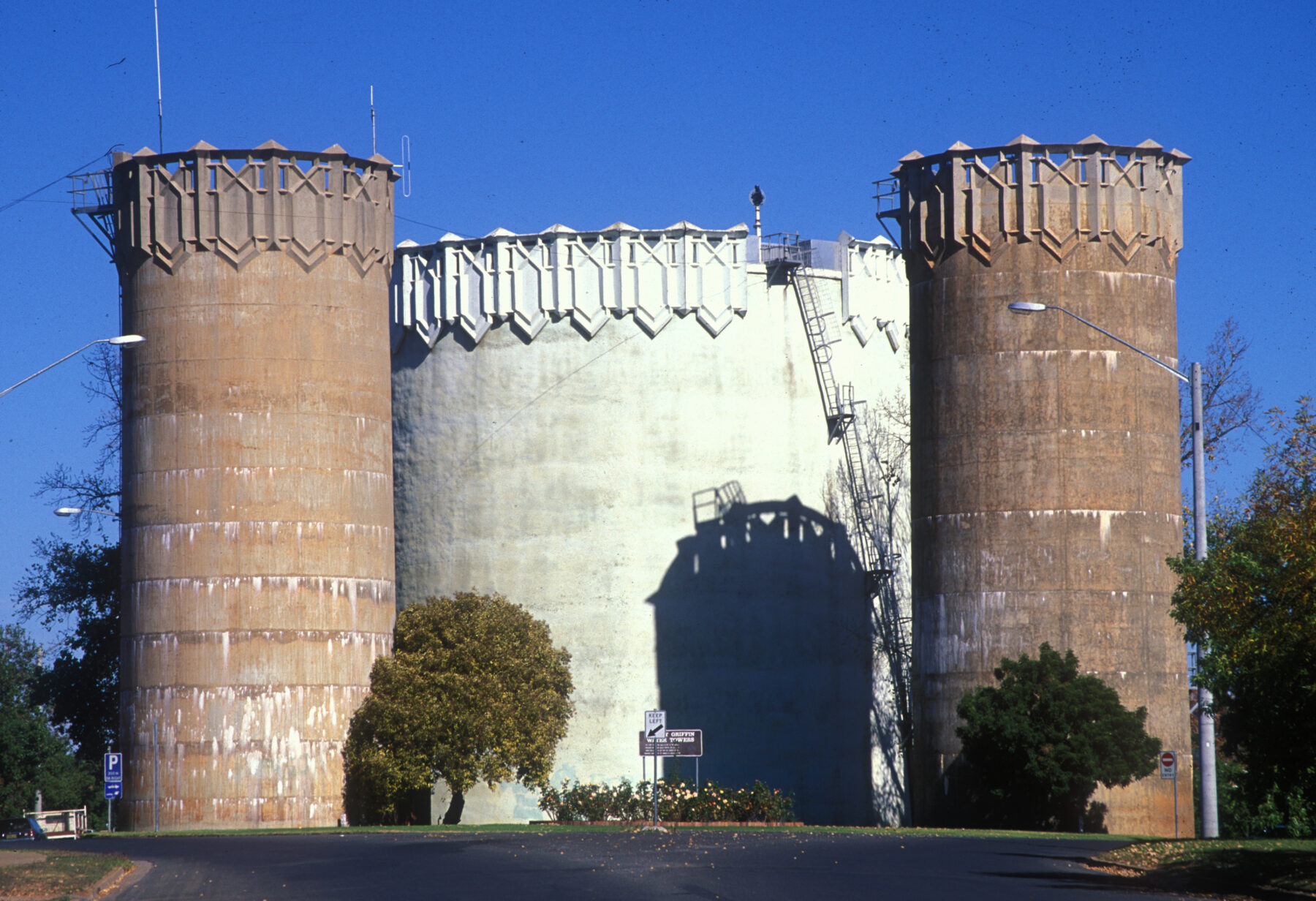A complete guide to Leeton, NSW

Created as part of the development of irrigation in the Riverina district of NSW, Leeton was designed by Walter Burley Griffin at about the same time as he was designing Canberra.
Established on a green site in the 1910s – with an essentially circular design with four street precincts radiating out from the town centre – its orderly layout, Art Deco buildings, tree-lined streets, 102ha of public recreation reserves and surrounding orchards and rice fields have been central to its appeal as a service town for an agriculturally-rich area.
Construction of the irrigation scheme began in 1906, and when the water started flowing in 1912, it transformed the barren plains of the Riverina into a fertile oasis. It is now the richest tract of agricultural land in Australia.
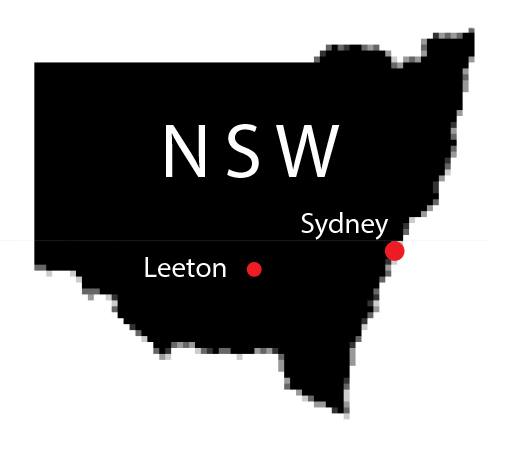
Location:
Leeton is 556km west of
Sydney via the Hume and
Burley Griffin highways.
It’s 152m above sea level.
Origin of Name:
Leeton was named after the
prominent MIA supporter
Charles Lee who was the New
South Wales Minister for
Public Works when the
irrigation scheme
opened.
Visitor Information :
Leeton Visitors
Information Centre
10 Yanco Avenue Leeton NSW 2705
02 6953 6481
Useful Websites:
visitleeton.com.au
https://www.visitnsw.com/destinations/country-nsw/riverina/leeton
Places of interest
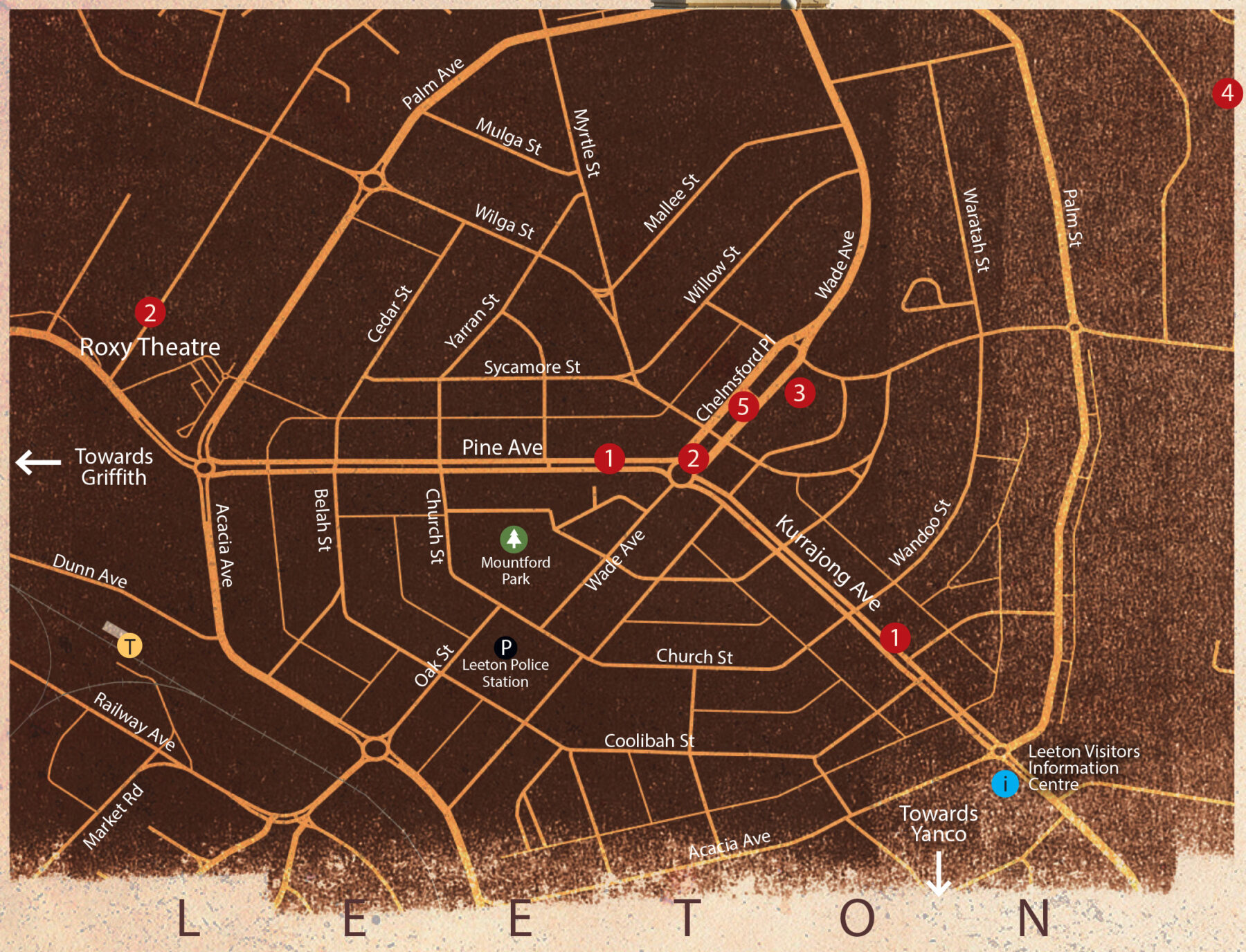
1. Leeton’s Art Deco architecture
Leeton has 21 buildings listed in the Art Deco Society of NSW register. Most of the buildings are on Kurrajong and Pine avenues. With Art Deco, the functional aspects of buildings are made aesthetic and beautiful in a rather extravagant way by various forms of decoration. Typically, facades are rendered, parapets are elaborately sculptured, awnings are suspended, ceilings are ornate, and shop doorways are recessed with curved display windows and leaded lights.
2. Roxy Theatre
The Art Deco centrepiece of the town, the theatre opened in 1930. Proprietor George Conson employed specialist theatre architects Kaberry and Chard to build the 1091-seat theatre. It was named Roxy after the Roxy in New York, the largest picture theatre in the world at the time. In 1933 the red neon sign was lit and later that year a stage was added. Today it is one of the few remaining rural Australian movie palaces and the town’s finest example of Art Deco architecture. It is particularly impressive at night. Movies are shown on Friday and Saturday nights.
3. Hydro Hotel, now Hydro Motor Inn
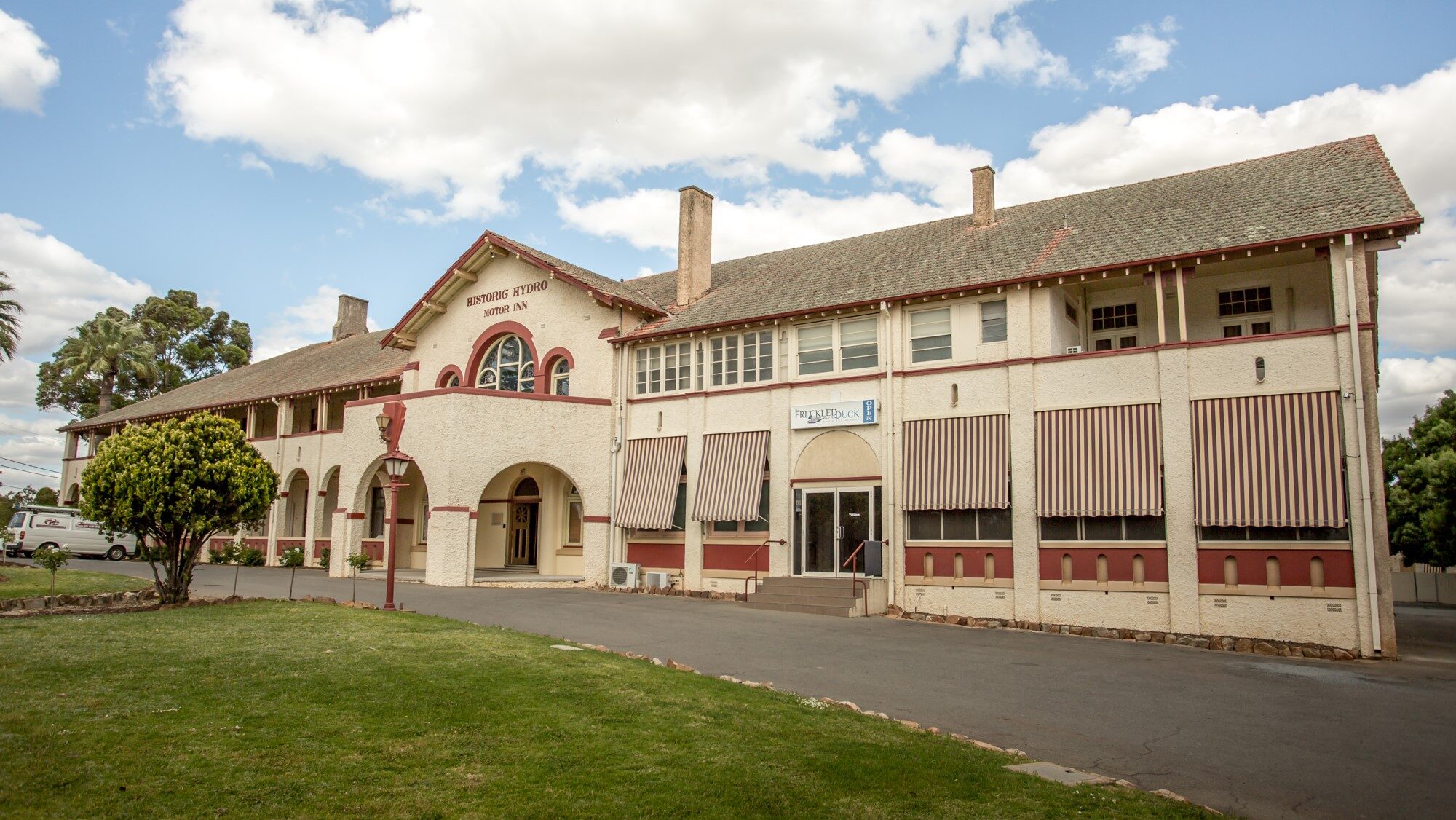
The impressive Hydro Hotel (1919) was originally built to house executives of the Water Conservation and Irrigation Commission who were supervising the construction of the MIA. At the time it was liquor-free, although alcohol could be purchased with meals. In 1924 the building was sold to Daniel McLeish, who built a bar and started selling alcohol. Today the bar features murals by local artist Lee Blacker Noble.
4. Henry Lawson’s house
Henry Lawson was sent to Leeton in 1915 by a group of influential friends in Sydney in the hope that he would dry out because he was a hopeless alcoholic by this time. He was to be paid two guineas a week and given a house in return for writing articles and poems publicising the MIA. He lived at Leeton from January 1916 to September 1917, publishing a number of articles, which were not always favourable.
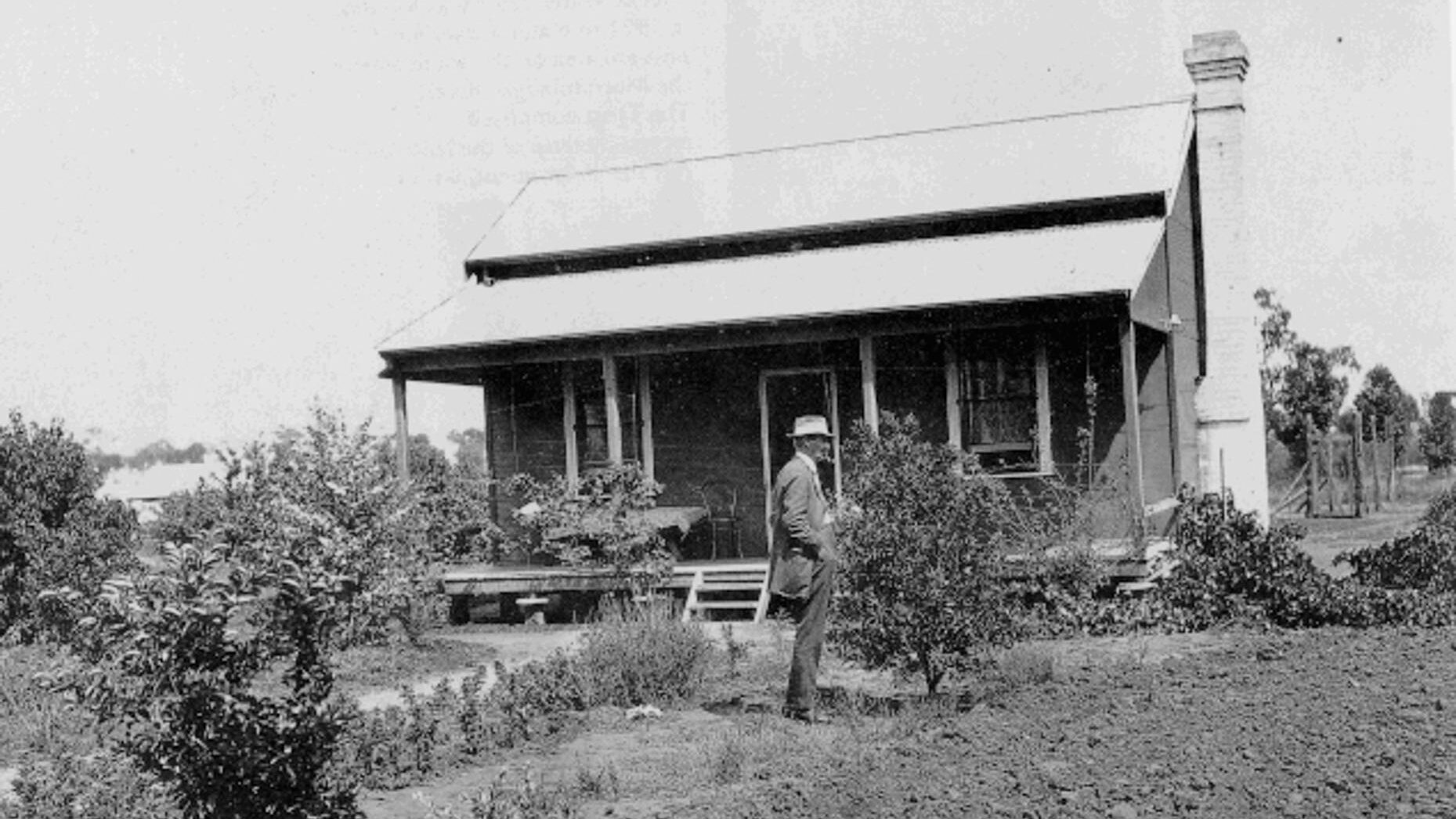
5. Chelmsford Place and the water towers
Chelmsford Place radiates out of the centre of Leeton to the north. There is a band rotunda and a beautiful tree plantation. Next to the rotunda are three water towers (1912, 1937 and 1974) decorated with Art Deco motifs. Walter Burley Griffin wanted this to be the cultural and entertainment centre of the town and he saw the two smaller water towers as “a high portal to the new town square”. He envisioned a plaza with a fountain and ornamental pools.
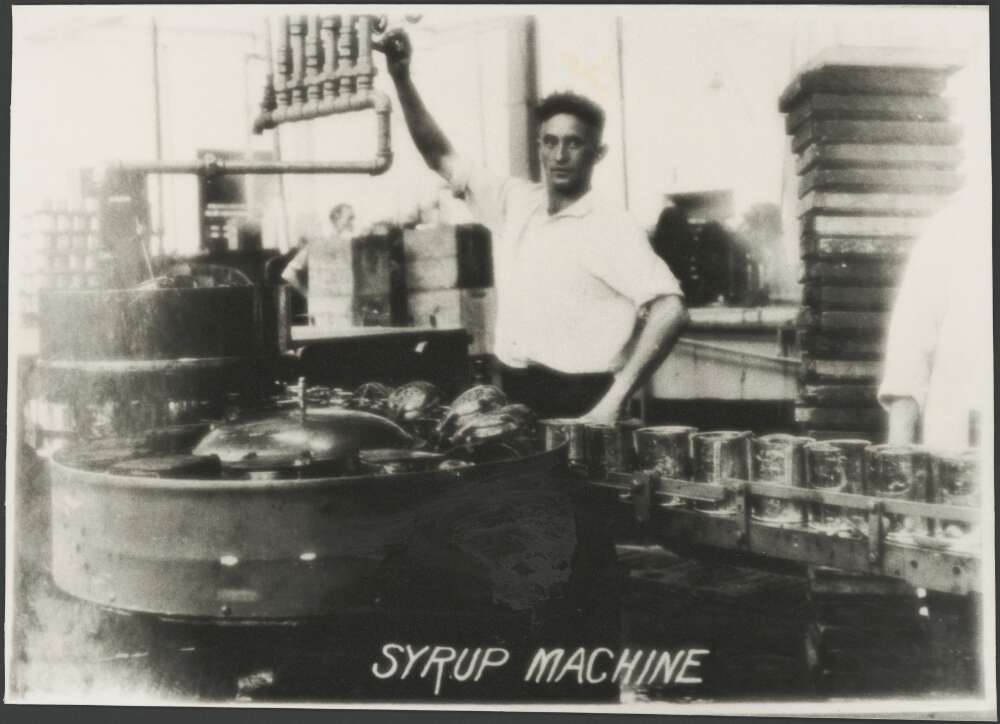
History
Before European colonisation the area around Leeton and Griffith had been Wiradjuri country for more than 20,000 years.
The first European to pass through the area was the explorer John Oxley in 1817 followed by Charles Sturt in 1838. Neither saw much potential in the land here.
By 1839 there was open warfare between settlers and the local Wiradjuri. Massacres and
atrocities occurred.
The railway arrived in Yanco in 1882 and a township, 6km south of present-day Leeton, began to develop around the station.
In 1900 Irish-born pastoralist Samuel McCaughey developed a successful irrigation system at North Yanco Station.
The government began the construction of the Murrumbidgee Irrigation Area in 1906.
The first blocks of land for farming were made available in 1912. Italian migrants were drawn to the area by the similarity with areas of Italy.
Leeton was gazetted in 1913. The Letona (soft
fruits) Cannery (pictured, right) was opened in 1914.
Leeton became a prohibition town in 1914.
From 1919 many returned servicemen settled on the new farms.
In 1922 the railway reached Leeton.
The rice industry was founded in 1924 and the first rice mill opened in 1951.
Image credit: courtesy National Library of Australia

